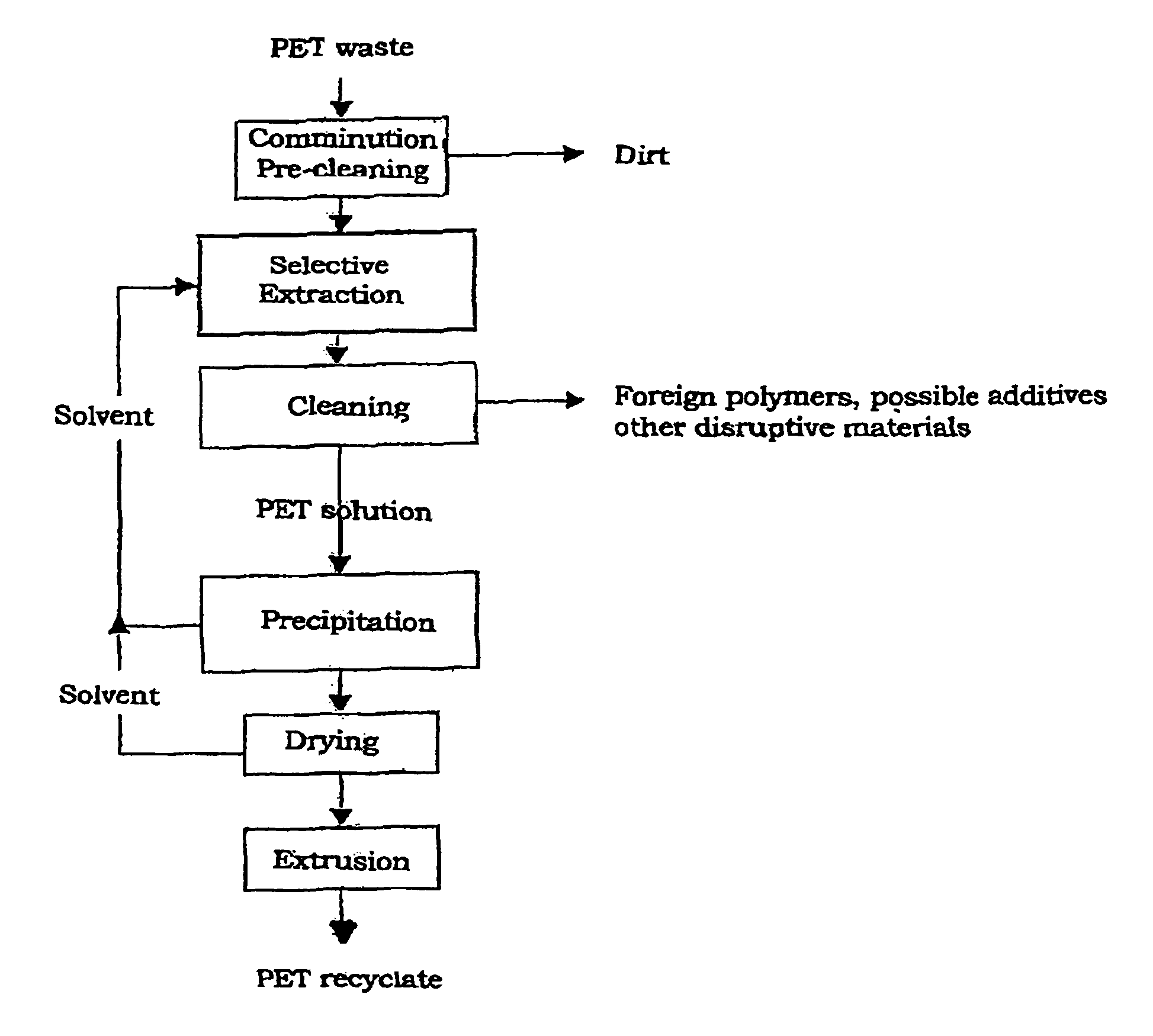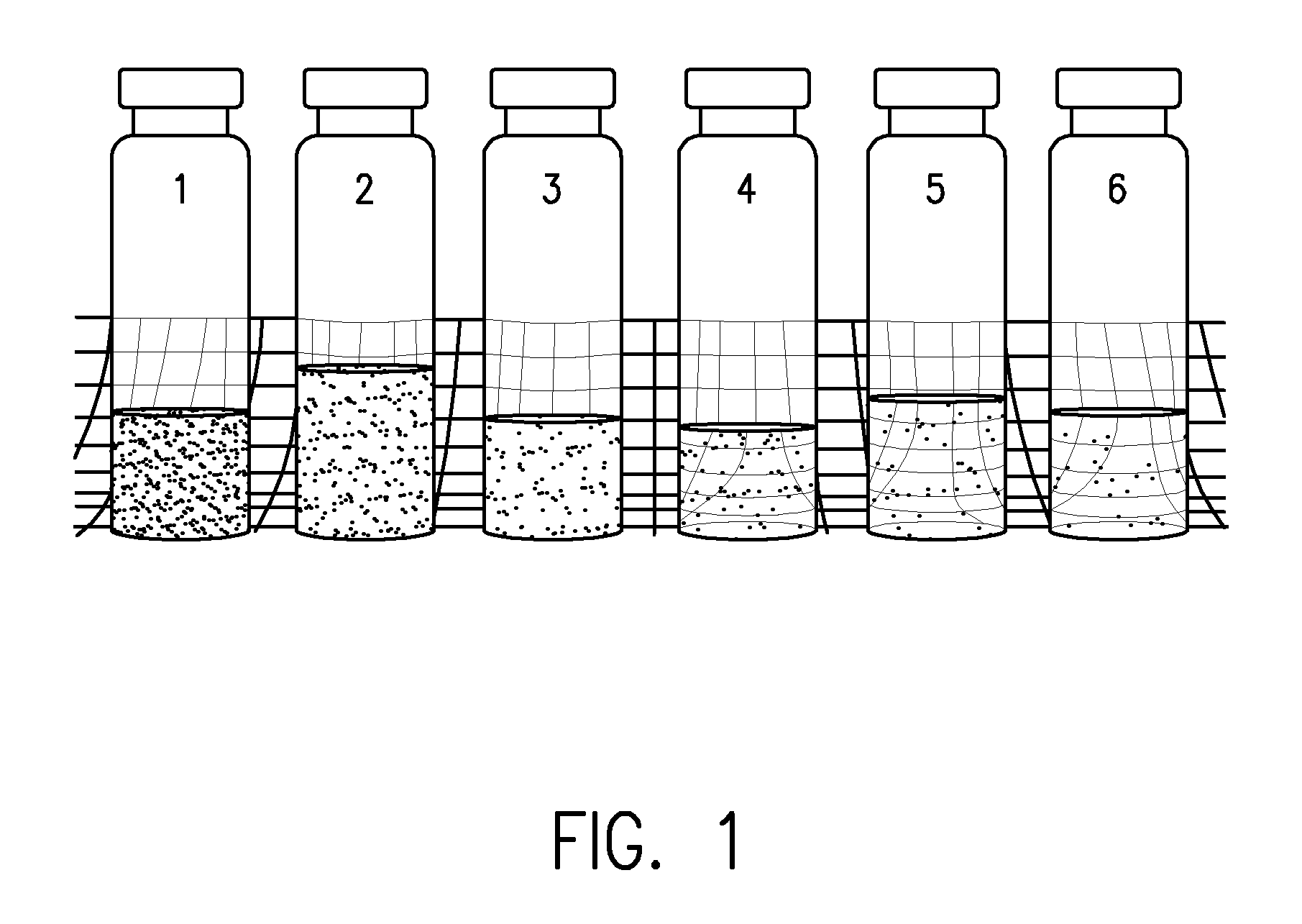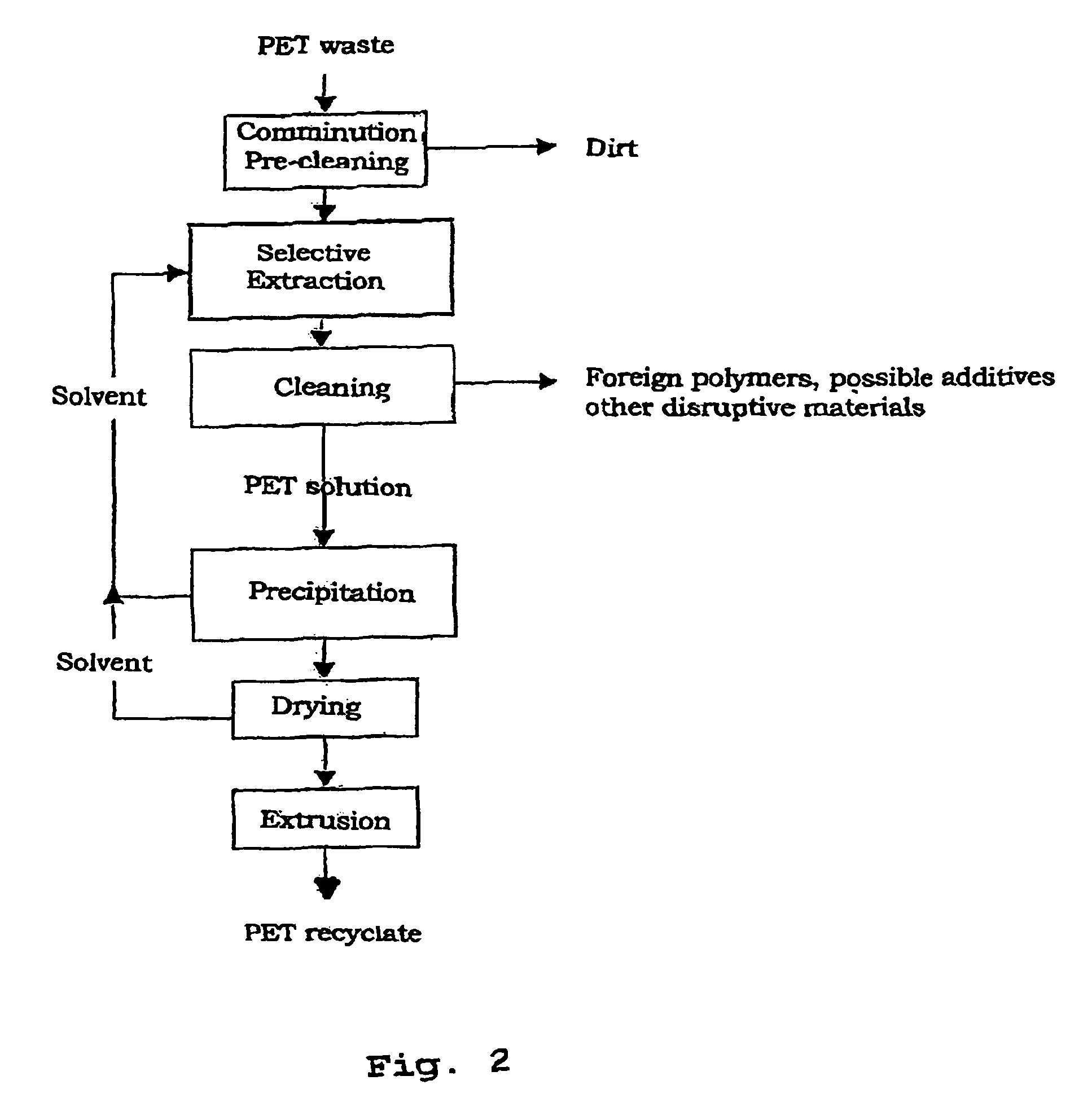Method for recycling polyesters or polyester mixtures from polyester-containing waste
a technology of polyester and polyester mixture, which is applied in the field of recycling polyesters or polyester mixtures from polyestercontaining waste, can solve the problems of high energy requirement of this method, inability to prevent partial dissolution of the pet, and inability to separate foreign polymers and other undesired disruptive materials, so as to reduce thus the cost of the method. , the effect of reducing the proportion of disruptive materials
- Summary
- Abstract
- Description
- Claims
- Application Information
AI Technical Summary
Benefits of technology
Problems solved by technology
Method used
Image
Examples
Embodiment Construction
[0031]FIG. 1 illustrates six PET samples which were treated according to different processing methods, in which: sample 1=recyclate from PET mixed waste without filtration and DBE postwashing; sample 2=recyclate from PET mixed waste without filtration with DBE post-washing or pressing; sample 3=recyclate from PET mixed waste filtered with folded paper filter; sample 4=recyclate from PET mixed waste with pressure filtration through CaCO3, wax; sample 5=recyclate from PET mixed waste with pressure filtration through CaCO3 and alkane precipitation; and sample 6=reference PET, white returnable bottle shredder.
[0032]It is noted that 10% TFA solutions of all products were applied to the samples.
[0033]In the subsequent example, details of the method steps, including the method steps as shown in FIG. 2, are discussed in detail. The pre-cleaning is implemented in two stages in the form of a friction washing and subsequent float-sink separation.
Friction Washing:
[0034]In order to separate the ...
PUM
| Property | Measurement | Unit |
|---|---|---|
| temperature | aaaaa | aaaaa |
| temperature | aaaaa | aaaaa |
| temperature | aaaaa | aaaaa |
Abstract
Description
Claims
Application Information
 Login to View More
Login to View More - R&D
- Intellectual Property
- Life Sciences
- Materials
- Tech Scout
- Unparalleled Data Quality
- Higher Quality Content
- 60% Fewer Hallucinations
Browse by: Latest US Patents, China's latest patents, Technical Efficacy Thesaurus, Application Domain, Technology Topic, Popular Technical Reports.
© 2025 PatSnap. All rights reserved.Legal|Privacy policy|Modern Slavery Act Transparency Statement|Sitemap|About US| Contact US: help@patsnap.com



